6 Signs to identify Philodendron polypodioides vs tortum- Let’s explain
Do you ever try to identify the differences between the philodendron polypodioides vs tortum like me? A few days ago, I had a discussion with one of my friends about the philodendron polypodioides and tortum because I was unaware of their dissimilarities. But she focused on some essential points that I didn’t notice before.
The philodendron polypodioides and tortums can be differentiated distinctively by their nature of leaves and growth habits. The leaves of polypodioides are more narrow and longer than those of tortum. The leaf blades of polypodioides are also more deeply pinnate than tortum. Besides, the polypodioides plant is taller and wider with its wide branches while the tortum plant is compact.
As both of these plants are much preferable as houseplants, philodendron polypodioides vs tortum is often a point of argument. But I’ve also noticed a few precise information about these differences later and highlighted them here. Let’s go through the comprehensive guide below.
Comparison table of philodendron polypodioides and tortum
There are a few differences between philodendron polypodioides and tortum in their origin, growth type and type of leaves. Before getting into the detailed discussion, here is a quick view of a comparison table between philodendron polypodioides and tortum.
| Basis of Comparison | Philodendron polypodioides | Philodendron Tortum |
| Scientific name | Philodendron pedatum | Philodendron bipinnatifidum |
| Plant type | Epiphyte | Epiphyte |
| Average length | Up to 7 feet (much bigger than tortum) | Up to 6 feet long |
| Average width | Slightly wider than tortum | Up to 28 inches wide |
| Humidity percentage | 70% (slightly more than normal humidity) | Above 70% humidity is best for thriving. |
| Ideal temperature | Average indoor temperature | The high temperature is best but can also tolerate the average indoor temperatures. |
| Type of leaves | Bright green, thinner leaves than tortum | Deep green, Long, spindly, deeply pinnate and palm-like. Smaller than leaves of polypodioides. |
| Potting medium | Add perlite, and charcoal to the potting mix | Add perlite, orchid bark and charcoal to lighten the potting mix. |
| Soil type | Good drainage, slightly acidic and rich with organic matter. | Well-draining, chunky, rich with organic matter |
| Soil pH | 5.5-6.5 | 7-8 |
| Watering | Require regular watering | Once in every 4-7 days |
| Flower blooming | Normally it doesn’t produce flowers or, spathes. | Can produce inflorescences, a green spathe with a creamy central spadix. |
| Native area | South America | Brazil, Colombia, Bolivia |
| Toxicity | Toxic if eaten. | Toxic if eaten |
Philodendron polypodioides vs tortum
Most people have the misconception that the philodendron polypodioides plant is the same as a philodendron tortum plant. But to be very clear, they are not the same plant at all as the two plants are hard to distinguish until they are kept side by side.
Anyone can easily differentiate these two plants just by observing their physical outlooks keeping them together. The most basic difference in the outer look of these two plants is that the leaves of philodendron polypodioides are in lighter and brighter green shade compared to that of tortums. The leaves of polyplodioides plants are longer, thinner and more finely divided than the leaves of tortums.
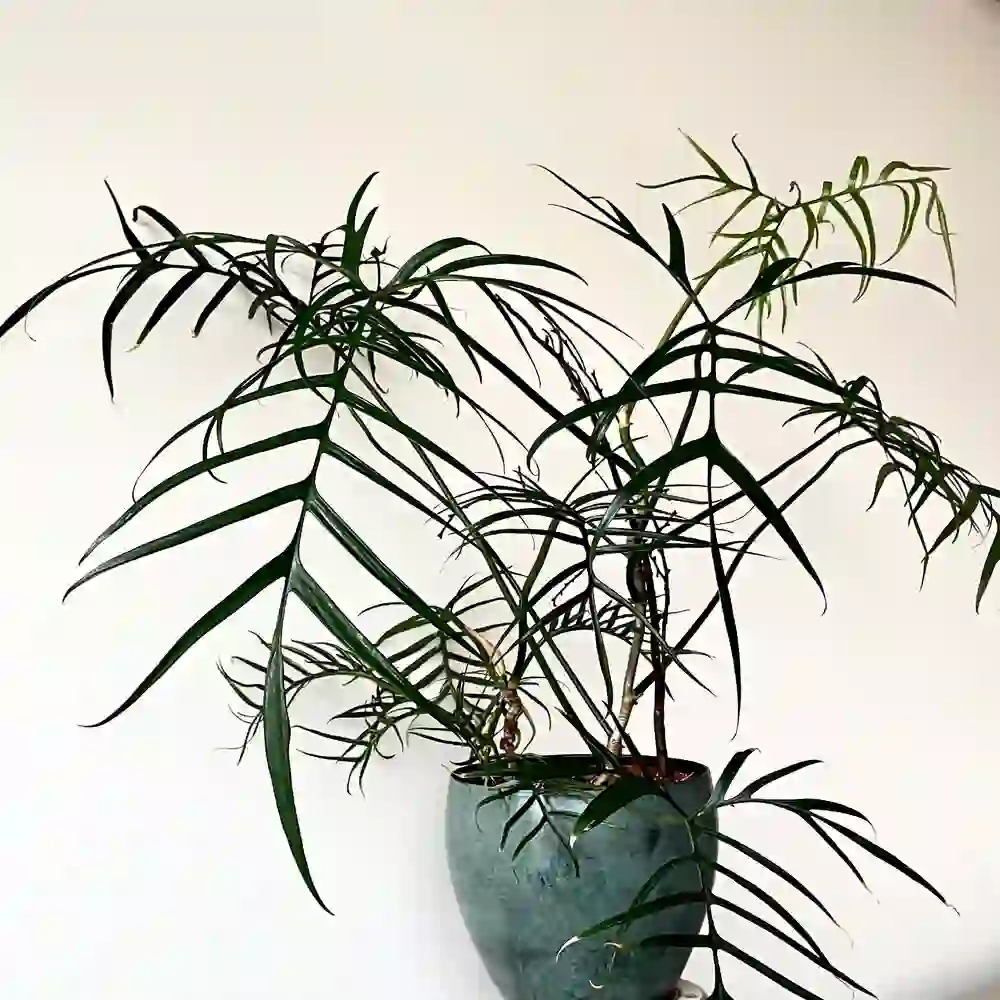
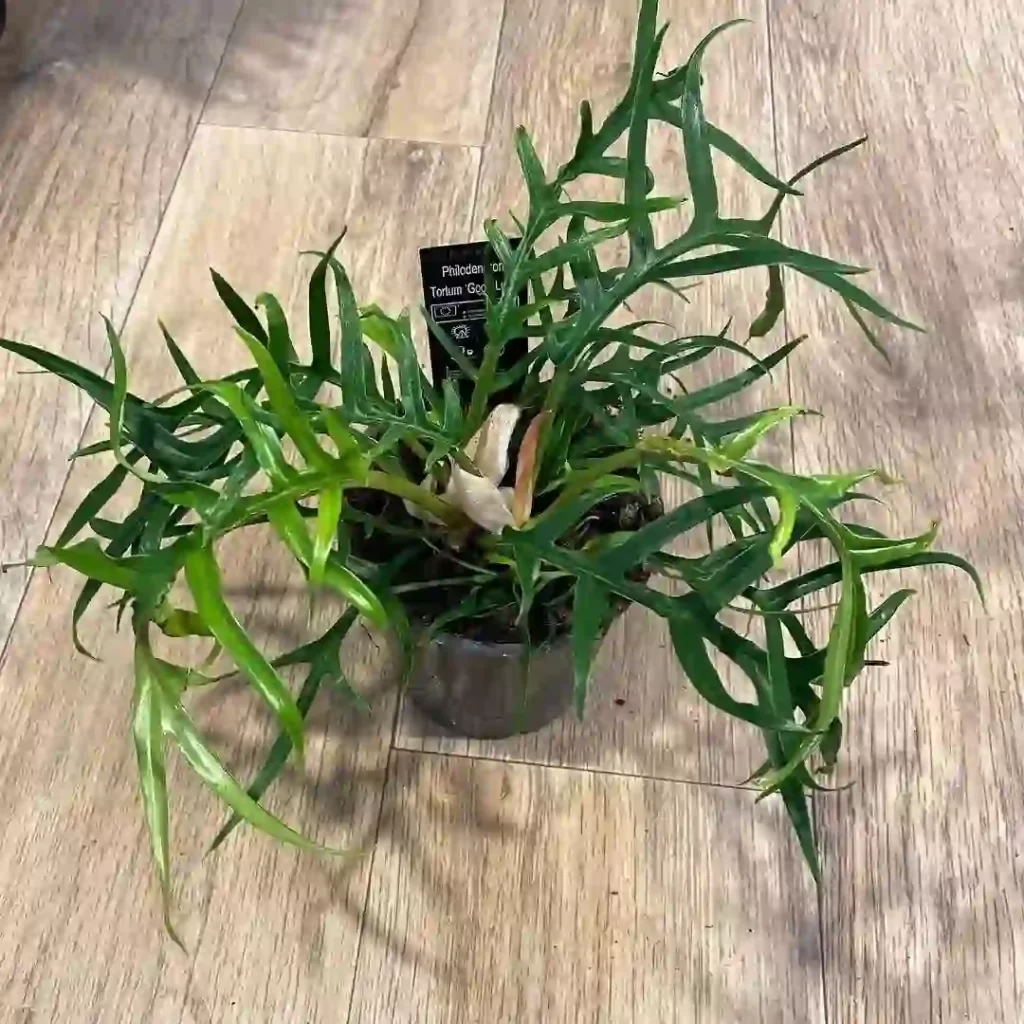
Besides, the philodendron polypodioides plant is normally bigger than the tortums as an indoor plant. Again, the leaves of tortums are also spindly and more compact than those of philodendron polypodioides.
How can we differentiate philodendron polypodioides and tortum?
Though philodendron polypodioides and tortums are related plants, they have several distinctive differences by which we can differentiate them. Let’s discuss them below in detail.
Types of leaves
Tortums are a nice and rare species with thin, spindly and spidery leaves. It almost resembles a palm plant in terms of looks. The tortums is best known for its sword-shaped leaves that are deeply pinnate.
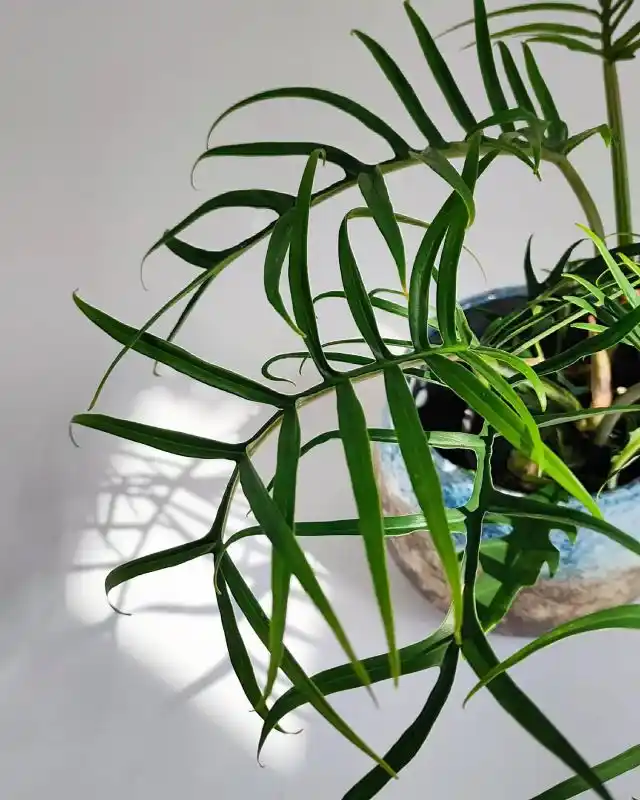
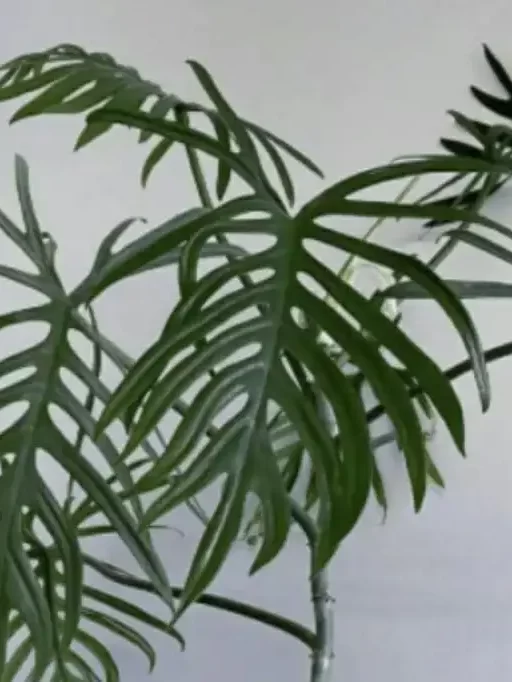
Besides, the leaves of philodendron polypodioides are more deeply pinnate, thinner and longer than those of tortums. They can be differentiated because of their very narrow, lacey, multi-lobed leaf blades which give a very delicate, fragile, but elegant look.
Types of foliage
The tortums plant produces long finger-like and twisted foliage that makes them unique and unwieldy. This plant is much loved for its foliage rather than its flowers.
Again, the foliage of philodendron polypodioides is not much noticeable.
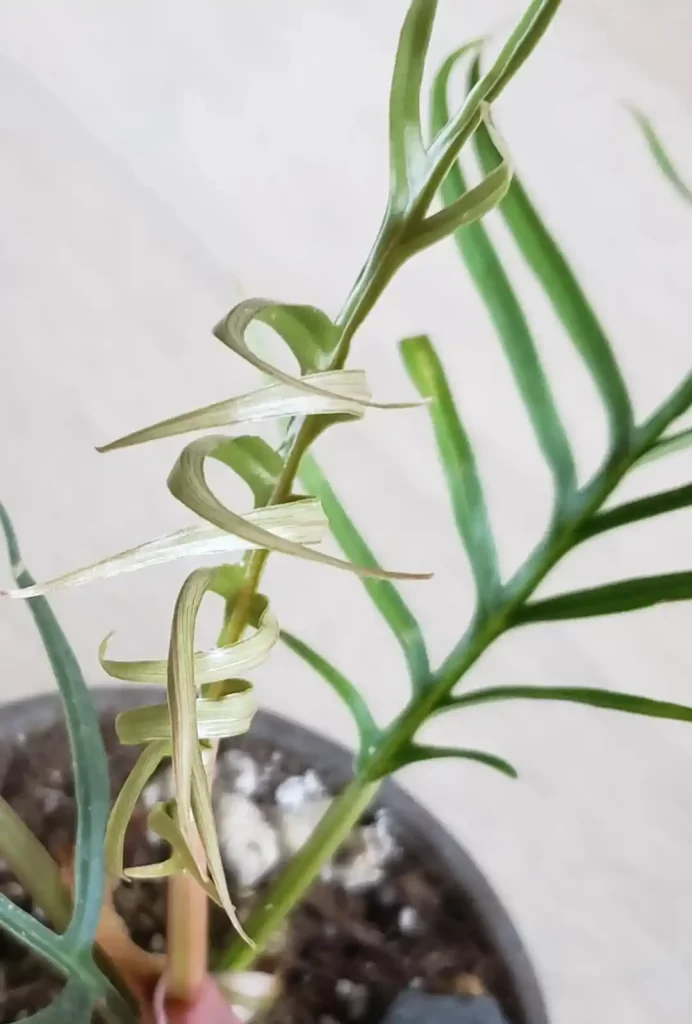
Growth of the plant
Philodendron polypodioides is a fast-growing plant by spreading branches wide. The growth of polypodioides is wild.
Whereas, the growth of the tortums plant is more compact than polypodioides. The tortums are smaller than polypodioides. It can grow up to 6 feet long and 28 inches wide.
Flower blooming
Philodendron polypodioides does not produce any flower.
Whereas, tortum produces inflorescences consisting of a green spathe and a creamy central spadix. The flowers are small and grow along the spadix itself. Again, when they get mature, the spathe turns a darker green outside and purplish-red inside.
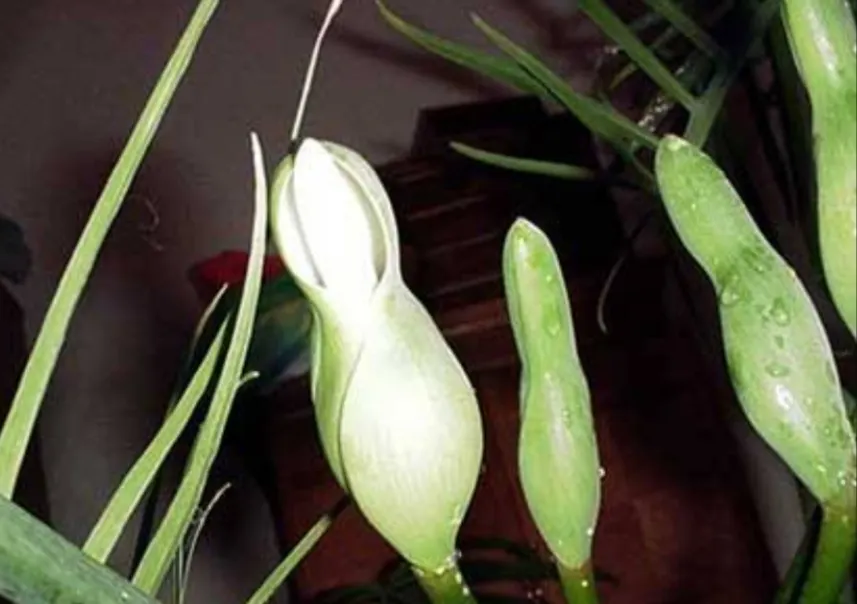
Water requirements
The philodendron polypodioides prefer water and moist soil. It is necessary to water them almost regularly to keep the soil moist. Whereas in the case of tortums, they can be watered once every 4-7 days. It doesn’t need any regular watering schedule.
Humidity
My Philodendron polypodioides grow in room conditions with humidity at about 70%. It’s slightly higher than average and is achieved by grouping several large plants. It can tolerate lower humidity also.
Again, the tortums prefer above 70% humidity. Below 70% humidity for a long time, it starts turning yellow or, gray.
Potting medium
A potting medium should be airy, well-draining, chunky and rich with organic matter for tortum plants. Perlite, orchid bark and charcoal can be added to lighten the potting mixes which are good for their growth.
Besides philodendron polypodioides, the potting mix should be good, slightly acidic, and rich in organic matter. Only charcoal is enough to lighten the potting mix for them.
Native area
The tortum plant is native to Brazil, Colombia and Bolivia. It is found in reinforced forests. Whereas, the philodendron polypodioides are native to South America.
Why does anyone need to distinguish between philodendron polypodioides vs tortum?
As both philodendron polypodioides and tortum are from the Araceae family and philodendron genus, look alike to some extent. So, often they are mixed up with one another. Again people get confused as both plants are vines and have long, pinnate, palm-like and greenery leaves.
As people often mistake both the philodendron polypodioides and tortum plants, we need to distinguish them properly and decorate the home accordingly. People who love to decorate their homes with houseplants have to learn about the comparison between the plants to individualize and bring them correctly.
How do philodendron polypodioides and tortum resemble each other?
As we know that the philodendron polypodioides and tortums both share a common ancestry and are a rare variety of houseplants, they contain some noticeable similarities in their appearance indeed and so people get confused.
Thus these similarities between them are needed for this article to clarify people’s misconceptions fully. The similarities are given below.
Scientific origin
Both the philodendron polypodioides and tortums are from the same genus named philodendron and family named araecea. Scientifically, they both are different species of the same genus.
Visual appearance
By physical outlook, the philodendron polypodioides and tortums are much similar to each other. They both are like palm plants with spidery, sword-shaped and deeply pinnate leaves. The lobes of the leaves of both plants are divided deeply like leaf blades. They both contain green and lacy leaves.
Light requirement
Both the philodendron polypodioides and tortums prefer bright and indirect sunlight to thrive best. In nature, they get enough bright light. So, as indoor houseplants, it needs to arrange enough bright but indirect sunlight as direct sunlight causes sunburn of the leaves.
The availability
Both philodendron polypodioides and tortums are very unique and rare houseplants. As they are found in forests of reinforced areas, it is very difficult to find them. Because of their unavailability, they are also much more expensive compared with others.
Toxicity
Both philodendron polypodioides and tortums are toxic if ingested. If any animal eats the leaves of those plants, severe symptoms can be seen, they can even die. So we should keep the plants away from pets and children.
Final thoughts
Gradually, I reached the end of my details. Finally, we can see that philodendron polypodioides and tortum are slightly confusing as they are from the same family order. They are similar, but not the same. Thus they have different needs and characteristics. From the entire discussion, let’s make recap what we get from the article-
- Philodendron polypodioides plants are larger and wider than tortums plants.
- Torturms plants are sturdy and more compact than philodendron polypodioides.
- The leaves of polypodioides are more deeply pinnate than those of tortums.
- The leaves of tortums are slightly spindlier than polypodioides.
Understanding all these comparisons can help to differentiate both plants and care for them and propagate them successfully accordingly.
Wait!! Wait!! You are reaching the end of the article. You can also identify phildondron cordatum by reading our comprehensive detailed guide on Philodendron Pink Princess vs Pink Congo.

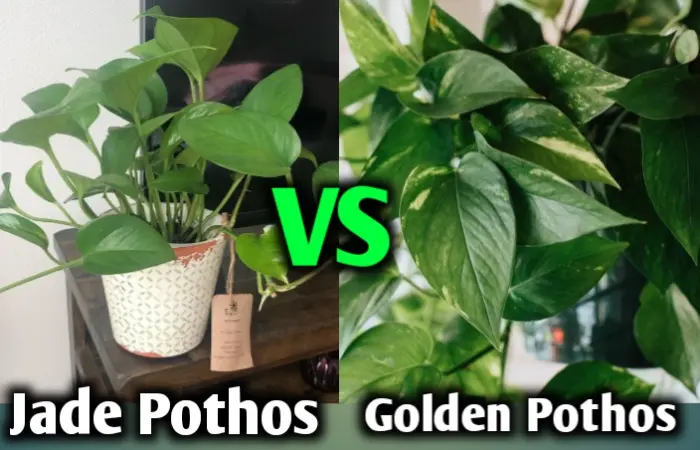
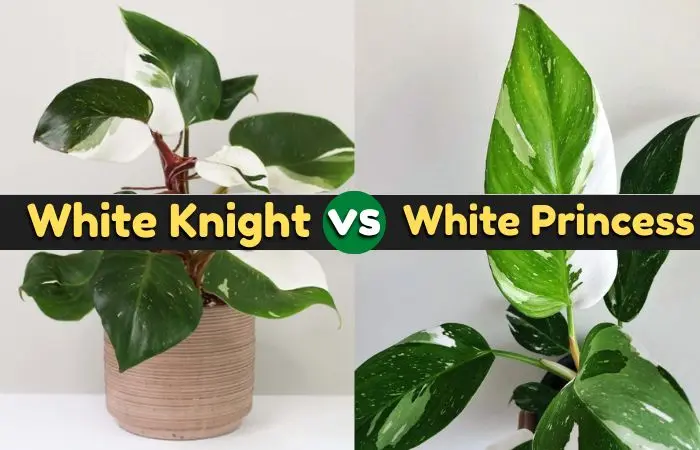
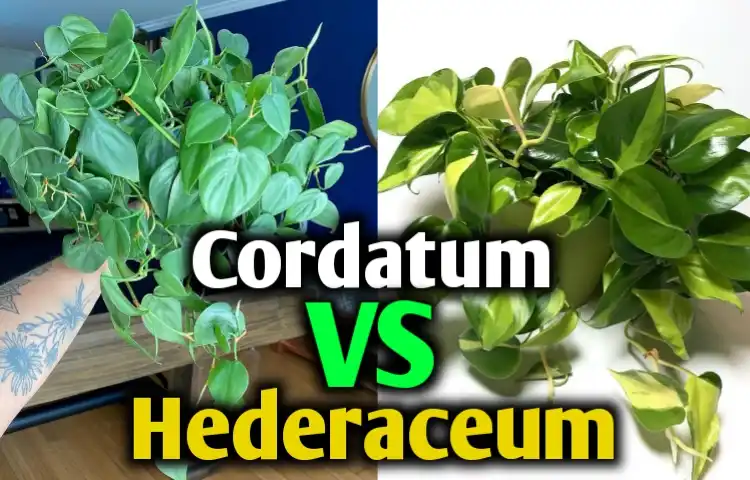
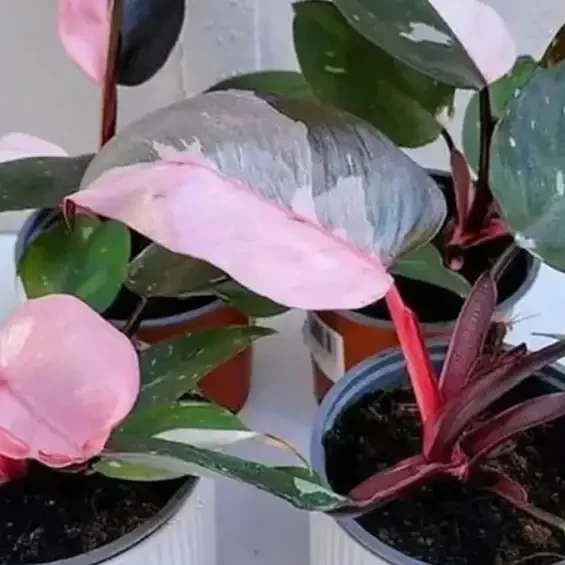
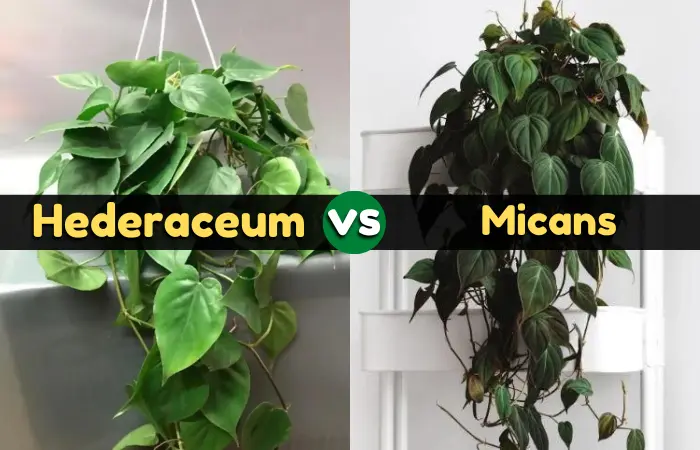
![Boston ivy vs Poison ivy [Differences & Similarities]](https://plantclassroom.com/wp-content/uploads/2022/09/Boston-ivy-vs-poison-ivy.webp)